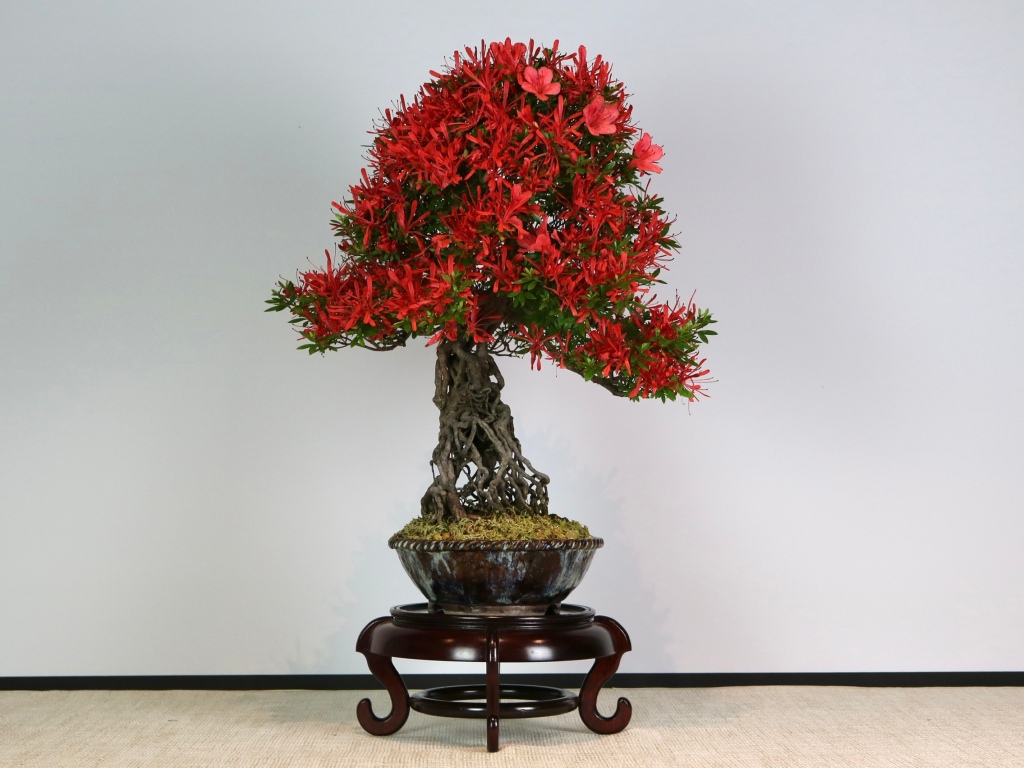The show was spectacular this year. Here are a few shots in full bloom.



As the flowers begin to fade, it is time to remove them. Before they’re removed, it is important to identify shoots that produce the wider petal flowers. They can become dominant and take over the tree. The appeal of Kinsai is the thin petal flowers, so they need to be protected. Shoots with wide petals won’t revert back to thin petals, so now is the time to find them and remove them:






This work was completed on May 21. It will be fed heavily, and left to rest for 10 days, and then pruned back.
So, on May 31, here is the tree, beginning to grow again:

And here it is, pruned back pretty hard. The goal is to keep the tree “young”, always replacing some aging branches with new shoots. To do this, it requires some aggressive pruning, which makes the tree look rough for a while:


But, azaleas grow fast, and by the end of July, it was nearly full again. Here is the result, and how the tree will spend the rest of the year:



























